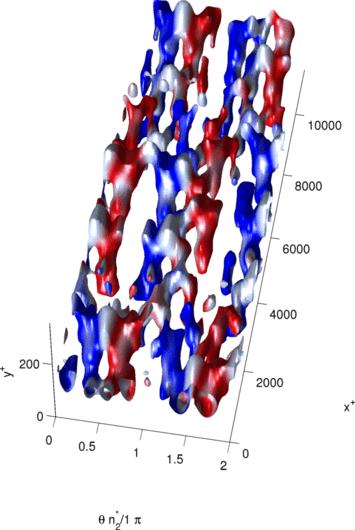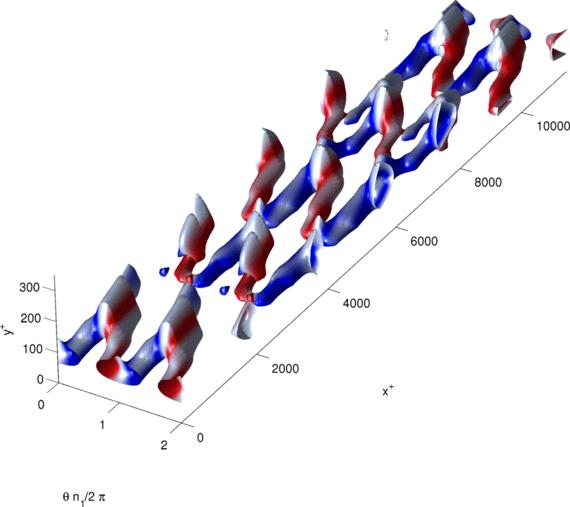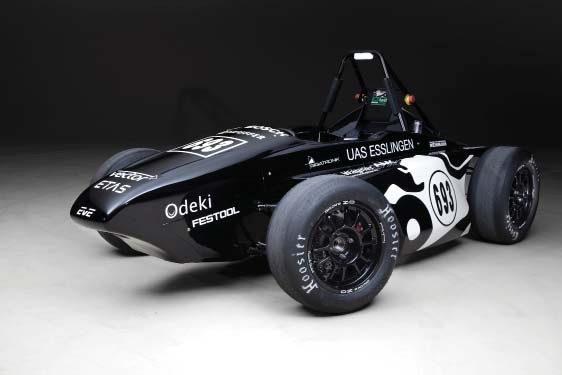7 August 2013
Scientists have developed a new understanding of how turbulence works, which could help to optimise vehicle performance and save billions in global energy costs.
Dr Ati Sharma, a senior lecturer in aerodynamics and flight mechanics at the University of Southampton, has been working in collaboration with Beverley McKeon, professor of aeronautics and associate director of the Graduate Aerospace Laboratories at the California Institute of Technology (Caltech) to build models of turbulent flow.
Recently, they developed a new and improved way of predicting the composition of turbulence near walls, which could lead to significant fuel savings, as a large amount of energy is consumed by ships and planes, for example, to counteract turbulence-induced drag. Finding a way to reduce the drag by 30 per cent could save the global economy billions of dollars in fuel costs and associated emissions annually.
Wall turbulence develops when fluids—liquid or gas—flow past solid surfaces at anything but the slowest flow rates. Progress in understanding and controlling wall turbulence has been somewhat incremental because of the massive range of scales of motion involved—from the width of a human hair to the height of a multi-floor building in relative terms.

complex flow structure predicted by the model using just three modes
Dr Sharma says: “The interesting puzzle has always been how to predict the seemingly chaotic motion of a turbulent fluid. Although very complicated, scientists have always observed recurring patterns in turbulence. The great red spot on Jupiter would be one well-known example. Somehow these motions must be encouraged more than others, so we started by asking the question, ‘what motions of the fluid does the flow amplify the most?’
“It turns out that this question is quite easy to pose — and solve — mathematically, and answering this question provides what are essentially these recurring patterns.”
Sharma and McKeon’s latest work, however, now provides a way of analysing a large-scale flow by breaking it down into smaller, simpler sub equations, or ‘blocks’ that can be simply added together to introduce more complexity and eventually get back to the full equations.
The researchers have shown that commonly observed features of wall turbulence can be predicted by adding together the results from analysis of a very small number of blocks, even as few as three. With very few blocks, things look a lot like the results of an extremely expensive, real-flow simulation or a full laboratory experiment, but the mathematics are simple enough to be performed on a laptop computer.
“We now have a low-cost way of looking at the ‘skeleton’ of wall turbulence,” says Professor McKeon, explaining that similar previous experiments required the use of a supercomputer. “It was surprising to find that turbulence condenses to these essential building blocks so easily.”
This new research helps to reduce the complexity of what the engineers are trying to understand, giving them a template that can be used to try to visually—and mathematically—identify order from flows that may appear to be chaotic. Scientists had proposed the existence of some of the patterns based on observations of real flows; using the new technique, these patterns now can be derived mathematically from the governing equations, allowing researchers to verify previous models of how turbulence works and improve upon those ideas.
Understanding how the formulation can capture the skeleton of turbulence will allow the researchers to modify turbulence in order to control flow and, for example, reduce drag or noise.
“Imagine being able to shape not just an aircraft wing but the characteristics of the turbulence in the flow over it to optimise aircraft performance,” says Professor McKeon. “It opens the doors for entirely new capabilities in vehicle performance that may reduce the consumption of even renewable or non-fossil fuels.”
Funding for the research, which is published online in the Journal of Fluid Mechanics, was partly provided by the Air Force Office of Scientific Research.















